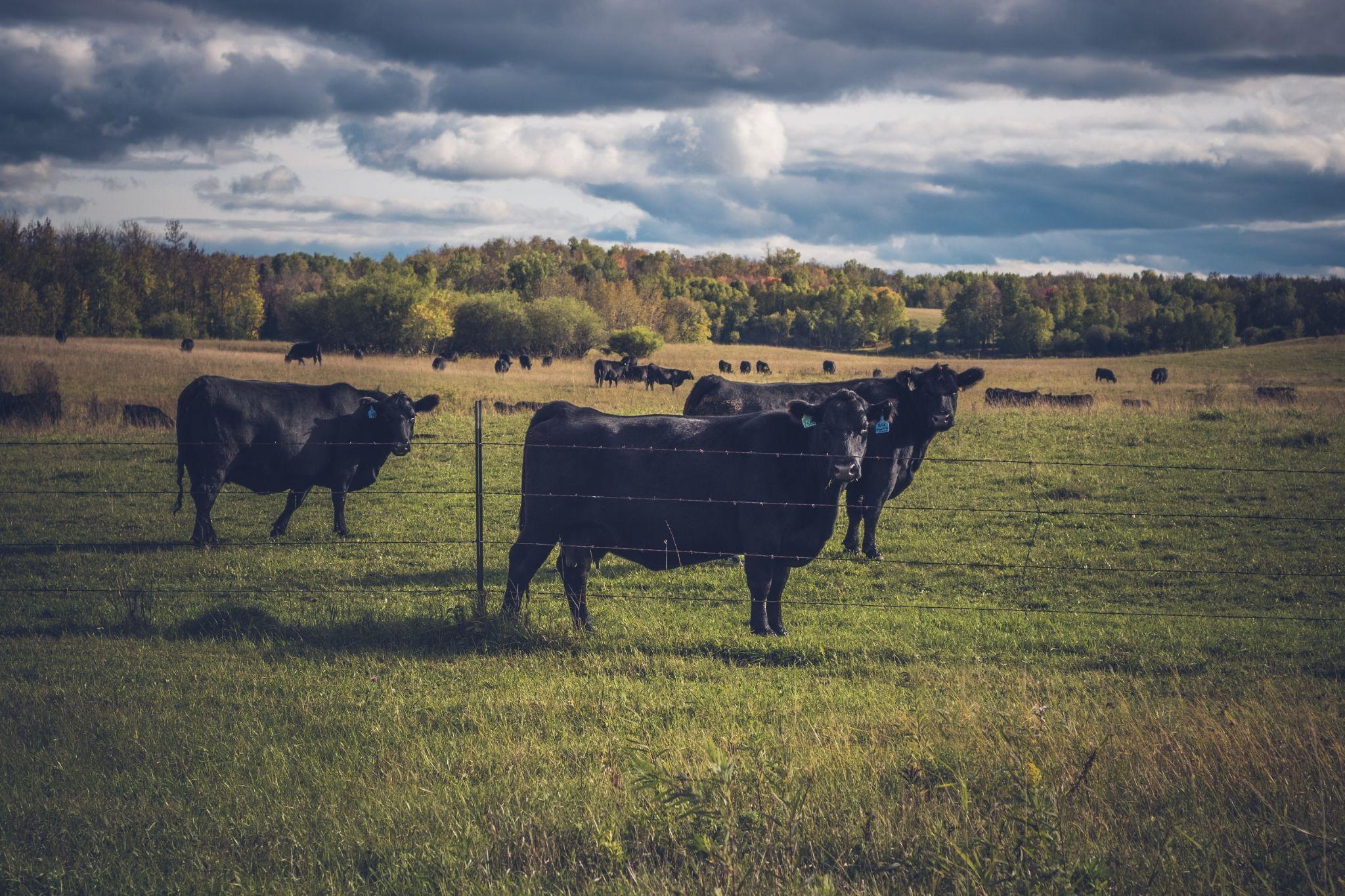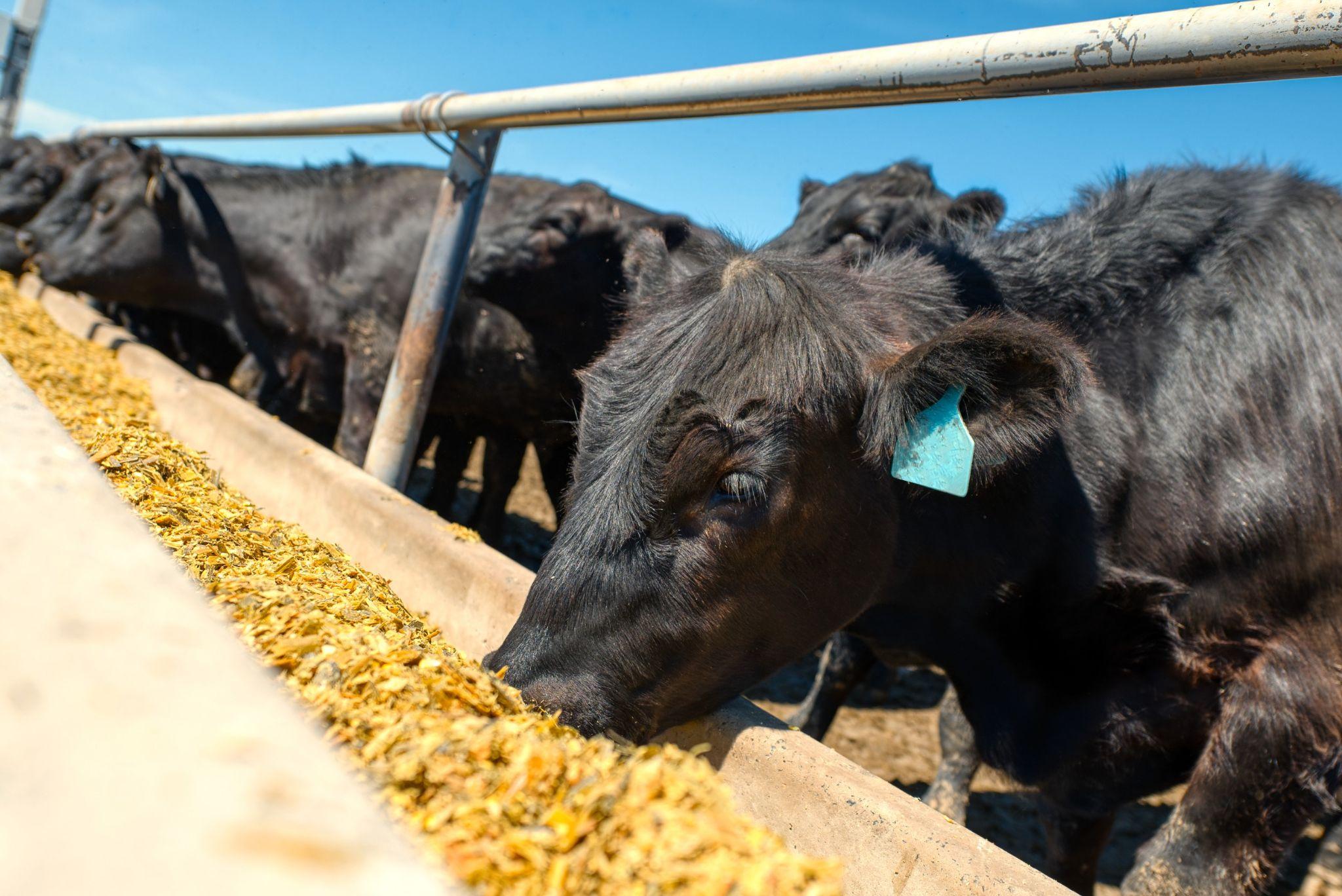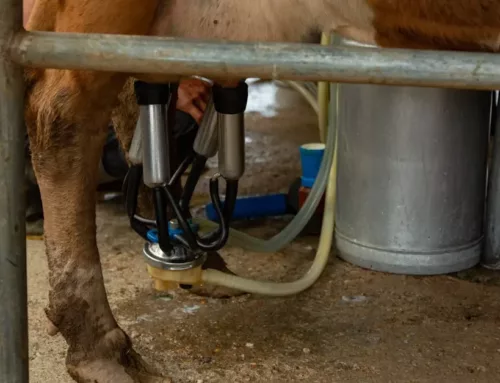Beyond DNA: Expanding Data-Driven Strategies to Optimize Livestock Performance

Beef cattle graze on a field in the summer.
At AgBoost, we like to keep our finger on the pulse of current scientific developments related to more efficient ways to manage livestock production. Previously, we explored the power of genomics in helping livestock producers make informed breeding decisions.
Our AgBoost platform visualizes the genetic information of livestock, identifies superior genetics, and gives recommendations on which heifers should be kept for breeding. Yet, DNA analysis is not the only way to optimize livestock performance.
Keep reading to learn about Precision Livestock Farming (PLF), an innovative approach to livestock management that leverages the power of sensors, algorithms, and applications.
What Is Precision Livestock Farming?
This is an advanced approach to managing and optimizing livestock production through the use of technology and data-driven decision-making. The goal of precision livestock farming is to enhance the efficiency, sustainability, and overall well-being of livestock while minimizing environmental impact and resource use. This approach involves the integration of various technologies, such as sensors, data analytics, automation, and communication systems, into the livestock farming process.
Previously, we have taken a closer look at such innovations as new phenotyping tools, digital twinning, and 3D printing. Today, we will delve into how PLF phenotyping tools can help identify changes in productivity, determine the reproductive status of animals, detect health problems, and group animals with similar nutritional or other management needs.
What Are the Elements of PLF?
Precision Livestock Farming (PLF) encompasses various elements that work together to optimize livestock production through the use of technology and data-driven decision-making.
Sensors
Let’s take a look at some examples of sensors.
- Radio-frequency identification tags are used for individual animal identification, tracking movement, and recording data on feeding and behavior.
- Accelerometers monitor the acceleration and movement patterns of animals, providing insights into activity levels, health, and behavior.
- Temperature and humidity sensors monitor environmental conditions, ensuring that animals are kept in optimal living conditions.
- Visual sensors, including cameras, are used for monitoring feeds.
Algorithms
Data analytics algorithms process and interpret data collected from sensors, providing valuable insights into various aspects of livestock animals, such as their behavior, health, and performance. Machine learning algorithms can learn from data patterns, making predictions and recommendations for optimizing management practices based on historical and real-time data.
Applications
These are databases that contain farm-related information, such as production and fertility data.
What Are Livestock Phenotyping Tools?

Beef cattle eat from their feeders.
To start with, phenotyping is an essential component of Precision Livestock Farming and is integral to making informed decisions about breeding, nutrition, health management, and overall herd optimization.
Livestock phenotyping tools are technologies and methods that livestock producers can use to assess and measure various physical, physiological, and behavioral traits of livestock systematically and quantitatively. They play a crucial role in understanding and bettering the management of animals to improve the performance of livestock.
PLF and Livestock Productivity
Regular weighing and body condition assessment using these tools help monitor the growth and nutritional status of individual animals. Changes in weight and body condition can indicate shifts in productivity.
PLF and Reproductive Performance
Ultrasound scanning and hormone monitoring can help assess reproductive performance by monitoring factors such as pregnancy status, fertility, and hormonal profiles. Detecting changes in reproductive patterns is essential for optimizing breeding programs and overall herd productivity.
PLF and Detection of Health Problems
Regular blood tests and biochemical analyses can help detect changes in health status, allowing for early identification of diseases or nutritional deficiencies that may impact productivity.
Monitoring activity levels and behavioral patterns can provide insights into the well-being of animals. Changes in behavior, such as reduced activity or altered feeding habits, may indicate health issues or discomfort, affecting productivity.
Monitoring body temperature and using thermal imaging can help identify signs of stress, illness, or disease. Early detection allows for prompt intervention, minimizing the impact on productivity.
Detecting lameness early on is crucial for maintaining livestock productivity. While severe lameness is easier to detect, successful treatment becomes less efficient by that point. Often, subtle signs of lameness are overlooked by producers.
Having a Precision Livestock Farming (PLF) monitoring system connected to a Data Sensing Technology (DST) that can identify mild, subclinical lameness cases would be highly beneficial. Researchers have explored methods like measuring vertical ground reaction forces using a force-plate system as animals walk.
PLF and Monitoring Individual Feed Efficiency
Feed is one of the highest costs in the beef industry. Therefore, identifying animals with high feed efficiency due to their phenotypic and genetic data is important. Let’s see how PLF phenotyping tools can help.
Researchers are exploring the use of low-cost cameras and computer vision algorithms. One method, structured light illumination (SLI), involves a camera and light projector projecting images of light patterns across the scene being monitored. Calibrated stereo cameras configured with multiple cameras can extract depth information on objects and analyze the disparity between corresponding points.
Another approach involves Red Green Blue—Depth (RGB-D) cameras, which provide a combination of images representing RGB color wavelengths and depth information. This method has been applied in various conditions, including open cowsheds, with promising results.
For instance, an RGB-D camera and deep learning algorithm measured feed intake with a mean absolute error of 0.127 kg per meal. This method looks promising and may improve further when combined with eating behavior sensing.
Overall, these advancements in monitoring systems show potential for more accurate and efficient feed intake measurements in livestock farming.
At AgBoost, we are excited about the technological advancements that can help livestock producers optimize their livestock performance. While PLF is still a work in progress, there are some steps you can take today to better manage your livestock. You can order your genetic testing kit through which you can submit hair samples from your animals to our testing partner. After testing is completed, you will get a full genetic profile of each animal on your AgBoost page. Take your cattle production to the next level. Start producing more with less. Contact us today to learn more about our innovative platform.


